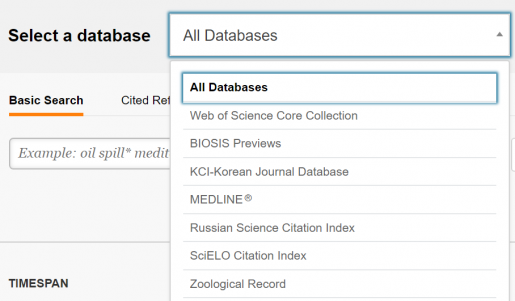Web of Science goes by many different names, contains more than just science, and is more than citation indexes. So let’s start with some background.
Science Citation Index was first available in 1964. It was created by Eugene Garfield and produced by the Institute for Scientific Information (ISI). It is now owned by Clarivate Analytics. Science Citation Index and other citation indexes are used to identify what later articles have cited any earlier article, have cited the articles of a particular author, or have been cited most frequently.
What citation indexes are included in the Web of Science Core Collection? The Web of Science Core Collection contains four citation indexes:
- Science Citation Index Expanded (1945-present)
Includes 8,850 major journals across 150 science, medical, and technology disciplines.
- Social Sciences Citation Index (1992-present)
Includes over 3,200 journals across 55 social science disciplines, as well as selected items from 3,500 leading scientific and technical journals.
- Arts & Humanities Citation Index (1992-present)
Indexes over 1,700 arts and humanities journals, as well as selected items from 250 scientific and social sciences journals.
- Emerging Sources Citation Index (2015-present)
Covers over 5,000 journals and captures scientific, social science, and humanities trends and developments beyond the high-impact literature. Journals were selected and reviewed by the Clarivate Analytics editorial team and have been identified as important to key opinion leaders, funders, and evaluators.
The “More Settings” feature in Web of Science allows you to select the citation indexes to search.

Other specialized bibliographic databases and regional citation indexes in Web of Science are listed below:
- BIOSIS Previews (1969-present)
Life sciences and biomedical research covering pre-clinical, experimental research, methods and instrumentation, animal studies, and more.
- KCI-Korean Journal Database (1980-present)
Produced by the National Research Foundation of Korea and provides access to literature published in South Korea from approximately 2,000 multi-disciplinary journals.
- Russian Science Citation Index (2005-present)
Bibliographic information and citations to articles from Russian researchers in over 500 science, technology, medical, and education journals which have been provided by the Scientific Electronic Library (eLIBRARY.RU), Russia’s largest research information provider.
- SciELO Citation Index (1997-present)
Contains literature from the sciences, social sciences, and arts and humanities published in leading open access journals from Latin America, Portugal, Spain, and South Africa.
- Zoological Record (1978-present)
A taxonomic reference and database of animal biology.
Use the “Select a Database” feature in Web of Science to choose a specific database to search.

To access the Web of Science Core Collection, type Web of Science in the search.HSLS box on the HSLS home page or browse the Databases A-Z list.
For more information, contact the Falk Library Main Desk at 412-648-8866 or send an e-mail to Ask a Librarian.
~Charlie Wessel